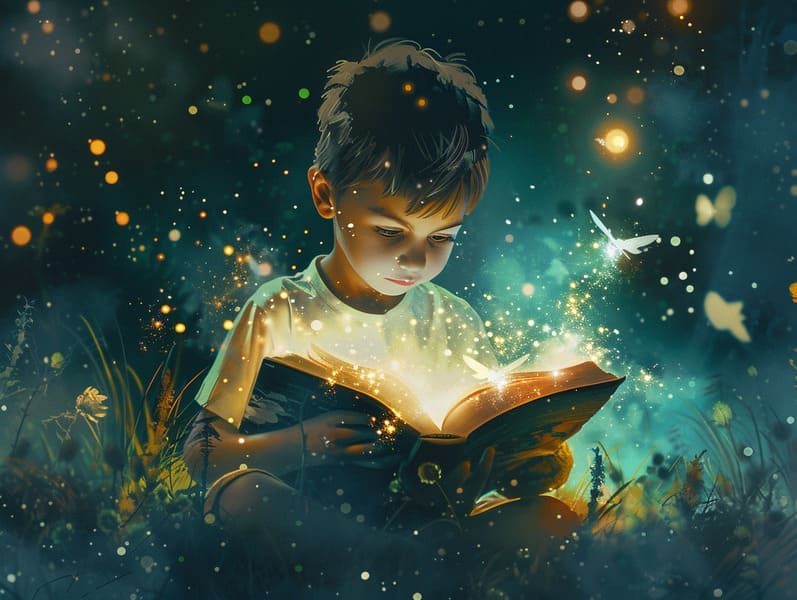A Brief History of Historical Fairy Tales with Their Timeless Majesty.
A Brief History of Historical Fairy Tales with Their Timeless Majesty.
Blog Article

Timeless fairy tales have legendary status. These tales have been spoken from one generation to the next well before they were ever written down. They sprang from a variety of backgrounds, including African traditions. They were initially narrated among elders, often carrying themes and messages relevant to the societal norms and beliefs of the time.
The Grimm brothers, Jacob and Wilhelm, were among the first to gather and publish many of these beloved tales. Their published works, "Grimm's Children's Stories," included classics like "The Story of Cinderella," "Hansel and Gretel," and "Snow-White and Rose-Red," which have since become essentials in the world of famous fairy tales. Similarly, Hans Andersen's fantastical stories, such as "The Sea Maid," and "The Duckling's Story," have captured hearts worldwide, guaranteeing their place in the pantheon of classic fairy tales.
Despite being ancient, these stories remain as pertinent as ever, especially as kids' bedtime tales. These magical stories are now available in numerous formats, including beautifully illustrated books, enchanting animations, and online fairy tales.
Their enduring popularity can be ascribed to several enchanting factors:
Moral Lessons: Classic fairy tales often teach important moral lessons. Narratives like "The Tale of the Boy Who Cried Wolf" teach the virtue of integrity, while "The Hare and the Tortoise" point out the qualities of perseverance and unpretentiousness. These narratives offer little ones clear distinctions between truth and falsehood, forming their moral compass in a gentle yet important way.
Compassion and Knowledge: Old fairy tales frequently illustrate beings facing struggles and tests, urging young listeners to relate with their struggles and applaud their triumphs. For instance, "Beauty and Her Beast" shows us the necessity of looking beyond appearances to realize the inner spirit of a individual, advancing insight and recognition.
Cultural Perception: Many old fairy tales are steeped in the cultural contexts from which they grew. Learning from these stories can provide illuminating insights into different customs, building a sense of world awareness and understanding.
Fantasy and Innovation: The imaginative elements in classic fairy tales—talking animals—motivate children’s visions. These fairy tales take readers to enchanted realms, stimulating fantasy ideas and a sense of marvel that continues a lifetime.
Old fairy tales are not only delightful but also educational. They work as entrancing tools in advancing various mental and emotional abilities in kids. When fairy tales are told out loud, they foster language proficiency by teaching new language and complex sentence structures. This practice also develops auditory perception and attentiveness, as little ones listen intently, keen to see what happens next.
Furthermore, contemplating the themes and characters of classic fairy tales can foster logical thinking and logical thinking. Young readers are taught to discern patterns, anticipate outcomes, and understand cause and effect. These contemplations also further children say their thoughts and feelings, enhancing their emotional intelligence.
In today’s modern era, the availability of web-based fairy tales has made these tales more available than ever. Internet sites and apps extend huge assortments of timeless fairy tales that can be enjoyed or listened to anytime, anywhere. Fairy tales narrated are particularly sought after, providing an captivating way for the young to delight in these spellbinding stories. Audio stories and spoken videos lead characters and settings to life, often enhanced by fantastical sound effects and soundtracks that improve the tale experience.
The lasting allure of traditional fairy tales lies in read more their ability to adapt to modern days while continuing with their basic principles. Contemporary renditions of these stories often introduce more representative protagonists and modern settings, making them familiar to today’s audience. However, the core values of valor, goodness, and justness remain unchanged, continuing to impact young readers of all ages.
Timeless fairy tales also offer a sense of contentment and comprehensibility. They showcase a structured narrative with a distinct beginning, middle, and end, often closing with the resolution of conflicts and the triumph of rightness over wrongness. This dependability can be solacing for young ones, making available a sense of sturdiness in an unstable world.
Traditional fairy tales continue to enchant and instruct new generations, maintaining their fascination and importance in modern society. As children's night stories, they make accessible a perfect blend of delight and instruction, backing moral values, empathy, and creativity. The existence of web-based fairy tales and the likability of fairy tales narrated secure that these ancient tales remain reachable to new generations.
By perpetuating and circulating these stories, we continue to celebrate the rich tapestry of tradition and cultural heritage. Whether you are accessing a gorgeously illustrated book, discovering a electronic library, or listening through an audiobook, the fascination of classic fairy tales is always within reach. These tales reveal of the invariable impact of tales and its ability to connect us across eras and regions.
Even if you are enjoying a vividly illustrated book, discovering a cyber collection, or hearing an spoken story, the captivation of Grimm's fairy tales is always within reach.
These stories emphasize of the unwavering essence of storytelling and its ability to draw us together across generations and cultures, casting a charm that captivates and teaches alike.